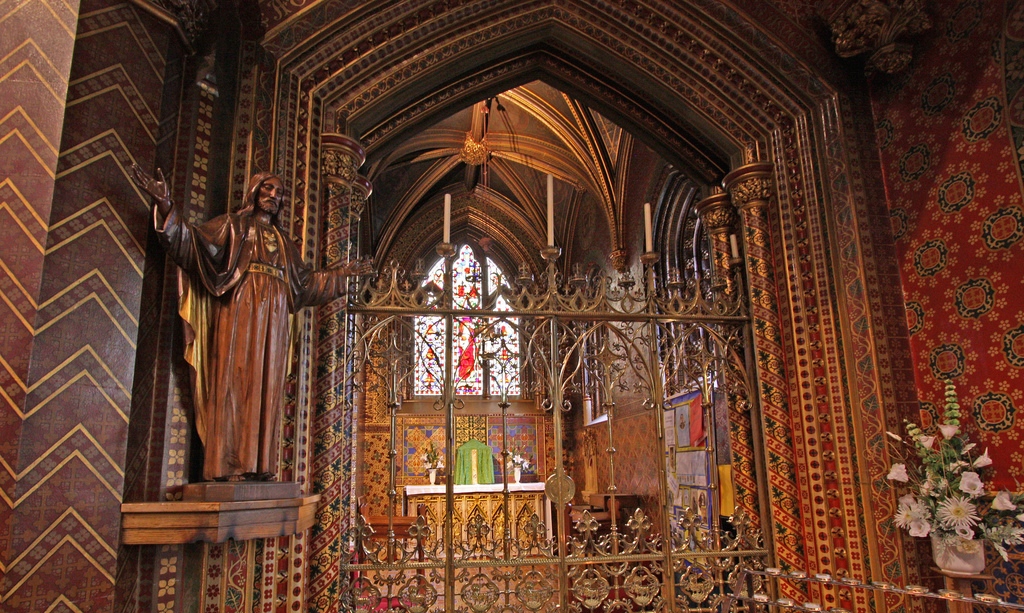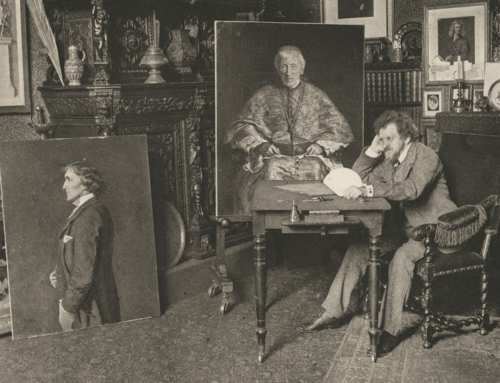This December 8th will mark the fiftieth anniversary of the close of the Second Vatican Council (1962-65). The Council treated a wide range of themes, many of which were anticipated by the nineteenth-century convert to Catholicism, Bl. John Henry Cardinal Newman. Recently, Newman’s preeminent biographer, Fr. Ian Ker, has written a short book on how Newman would have understood the Council: Newman on Vatican II. Here are three areas, drawn from Ker’s book, in which Newman’s thought can help us to reap the fruits of the Council today.
Doctrine and Its Development
Newman took doctrine seriously. Against those in his own day who wished to “liberate” religion from dogma, Newman argued that dogma is the necessary means by which the revelation entrusted to the Church is preserved. Far from obscuring the divine mysteries, doctrine, he argued, makes the mysteries available to us throughout the centuries. While doctrine cannot be changed, because the divine mysteries do not change, Newman recognized that doctrine could develop, because the divine mysteries are inexhaustible. Under the guidance of the Holy Spirit, the Church constantly reflects on revelation, enters more deeply into its mysteries, and achieves a greater articulation of the deposit of faith. This is how the Marian dogmas of the Immaculate Conception and the Assumption could be defined so late in the history of the Church. It’s not that there are new revelations, only that the original revelation is better understood.
Ecclesiology
While Newman insisted on unity in doctrine, he also promoted a vibrant variety in ecclesial life. He lamented the fact that the Anglican Church, in the name of “sensibility,” refused to make room for monasticism and other special forms of radical discipleship. As a Catholic, he lamented that the Bishops of his day neglected to encourage the initiative of the laity or to attend to their opinions. As a member of the Oxford Movement, Newman had worked with clerics and lay persons to produce tracts, poems, and novels, which were circulated more by personal contact than institutional structures. When he became Catholic, Newman joined the Oratory of St. Philip Neri, where together with laymen he engaged in “informal ‘exercises’ which consisted of singing, prayer, readings, talks, and discussion” (p. 97).
Vatican II sought to encourage such harmonious variety by appealing to the notion of “charisms”:
[The Holy Spirit] also distributes special graces among the faithful of every rank. By these gifts he makes them fit and ready to undertake various tasks and offices for the renewal and building up of the Church, as it is written, ‘the manifestation of the Spirit is given to everyone for profit’ (1 Cor 12:7). Whether these charisms be very remarkable or more simple and widely diffused, they are to be received with thanksgiving and consolation since they are fitting and useful for the needs of the Church. (Lumen Gentium, §12)
This “charismatic dimension” of the Church, however, cannot be understood as independent of or in opposition to the hierarchical dimension. As an Anglican, Newman had witnessed the dissipation of charismatic movements that could find no place within the structure of the establishment. It is the teaching of the Council that both dimensions come from the same Spirit. The charismatic dimension renews and builds up the Church, while the hierarchical dimension cultivates the charismatic, “testing all things and holding fast to what is good” (Lumen Gentium, §12; 1 Th 5:21). In the twentieth century, despite significant misappropriations of the Council, the Church has held fast to much good in the form of ecclesial movements (to say nothing of the many smaller initiatives and labors) such as Focolare, Communion and Liberation, and the Neocatechumenal Way. Before he became Pope, Cardinal Ratzinger claimed that this new phenomenon of ecclesial movements represented the fifth great charismatic movement in the history of the Church.
The New Evangelization
In the final chapter, Ker notes that the Church has increasingly turned her attention to the problem of secularization and to the challenge of re-evangelizing formerly Christian peoples. Certainly the charismatic dimension, in its capacity of building up the Church, has a part to play here. In his novel Callista, set in third-century North Africa, Newman depicts the conversion of a young woman who has grown weary with the metaphysical prospects of her day. She could find nothing in the world that could adequately answer the longing of her heart. What impresses her about the three Christians she comes to know is that they “made [Christian discipleship] to consist in the intimate Divine Presence in the heart”:
It was the friendship or mutual love of person with person. Here was the very teaching which already was so urgently demanded both by her reason and her heart, which she found nowhere else; which she found existing one and the same in a female slave, in a country youth, in a learned priest. (Quoted in Ker, p. 137)
Callista found what her heart desired, because she found people who, even with their various backgrounds, knew Jesus personally.
In the face of secularization, all the members of the Church are called to continue their friendship with Jesus: to speak with him in prayer as with a friend, to go to meet him in the sacraments, and to seek his face in the Scriptures and Catholic doctrine (rather than the mythology so often present in movies and the media). The joy and peace of knowing Jesus will naturally overflow from our hearts into others.
✠
Image: Fr. Lawrence Lew, O.P., Blessed Sacrament chapel in Cheadle







